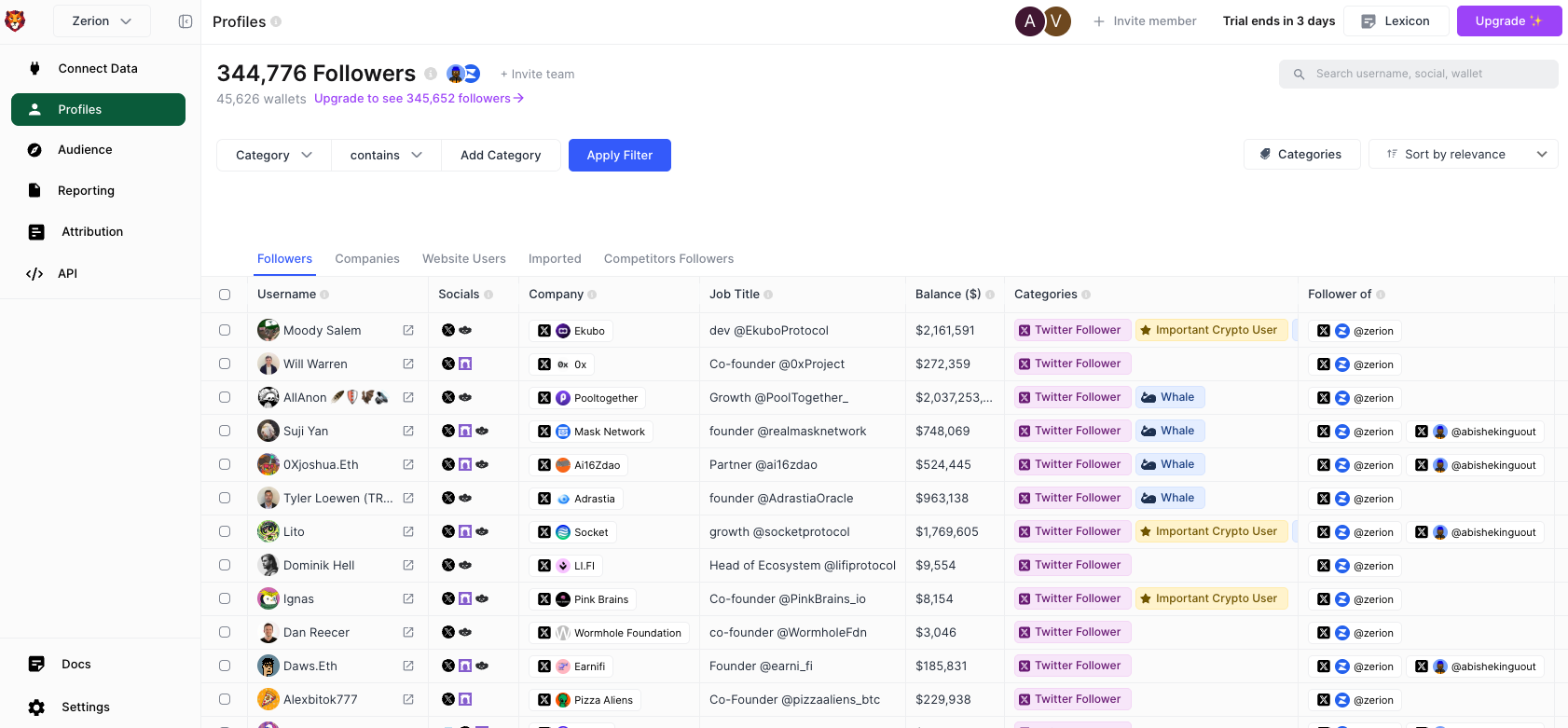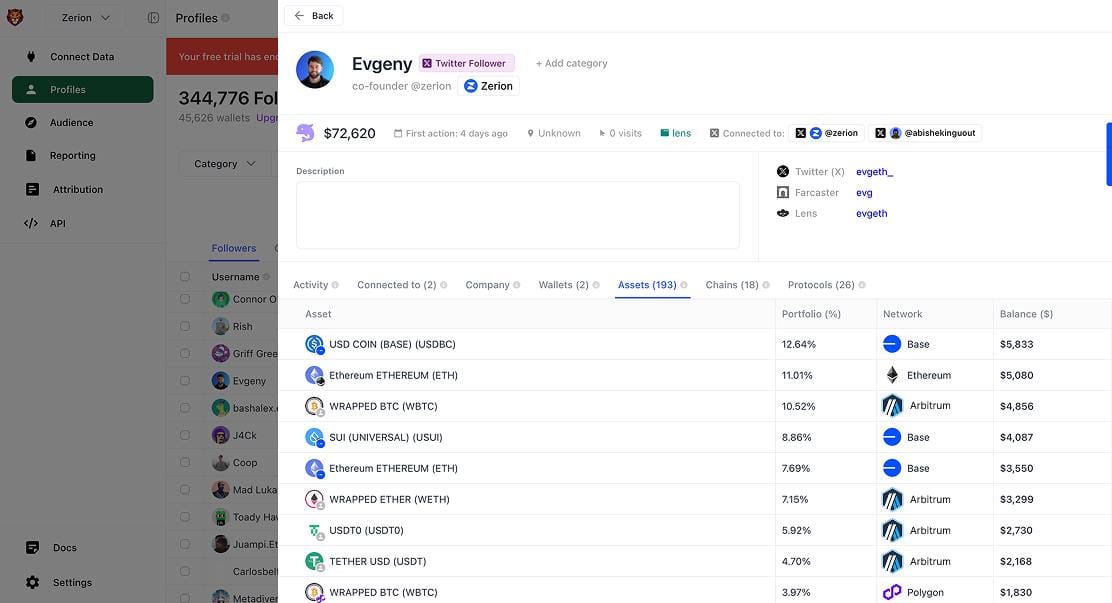Understanding crypto users goes beyond clicks and impressions. It’s also about seeing what they actually do onchain.
That’s where Safary comes in. The platform helps crypto teams bridge social, web behaviour, and wallet data, revealing which followers are true power users, which protocols they use, and how engaged they are across chains.
To make that possible, Safary needs wallet data that’s fast, accurate, and unified across ecosystems. With Zerion API, Safary found a single source of truth for balances, tokens, and DeFi positions on both EVM and Solana.
TL;DR
What is Safary?
Safary is a growth analytics platform for Web3 teams. The team also built an invitation-only community of crypto’s top growth leaders and launched the first certified course on crypto marketing and BD.
Safary’s platform connects wallets and social data to help projects understand their onchain communities, identify power users, and measure growth, all while preserving user privacy.
For example, BD and marketing teams can look at who follows their company and team X accounts.

By examining followers’ onchain footprint, teams can identify whales, active users, founders, and more. They can drill down into assets, chains, protocols, and more.

The challenge: fragmented wallet data at scale
Safary helps Web3 teams understand and grow their onchain audiences by seeing the whole picture.
Its platform connects website events, social, and wallet data to reveal which users are the most engaged, which protocols they use, and how projects can reach them.
But building a coherent picture of a wallet’s activity across chains wasn’t easy.
Safary originally stitched together multiple APIs to get token and position data. Each provider returned slightly different balances, token coverage, or refresh cadences. Users and internal teams often saw inconsistent numbers between wallets and dashboards, creating confusion and extra data filtering on Safary’s side.
“Before Zerion, assets from one provider often didn’t match the balances we displayed elsewhere. Users didn’t understand why the numbers were different,” said Eliott Mogenet, CPO of Safary. “We wanted to unify everything with one reliable source.”
Reliability wasn’t the only issue. Scale became another challenge.
By serving leading Web3 teams, Safary scripts now cover at least a quarter of all active crypto addresses. Safary’s database includes over 25 million connected wallets and over 50 million events.
Performance spikes and unpredictable pricing models from data vendors made it harder to plan infrastructure costs and maintain smooth refresh cycles.
The solution: unified multichain enrichment
Safary adopted Zerion API to power wallet enrichment for both EVM and Solana addresses.
Whenever a wallet connects through a Safary-embedded snippet or an integrated social profile, Safary queries Zerion’s portfolio, positions, and protocols endpoints.
With a single call to Zerion API, Safary enriches each wallet with normalized data on:
- Balances across chains
- Token holdings
- DeFi protocol positions
These onchain insights are then merged with social identifiers (like X and Farcaster handles) to build rich, searchable profiles for Safary’s clients.
For example, Safary can instantly surface followers of Zerion who LP on Uniswap or are active across specific chains.
This helps marketing, product, and BD teams pinpoint power users and tailor campaigns without touching any personal data.
“Zerion gives us a single, coherent snapshot of each wallet—across EVM and Solana,” said Eliott. “It’s reliable, performant, and saves us from running separate indexers.”
Why Zerion API
Safary evaluated multiple data sources and found Zerion’s combination of reliability, performance, and unified schema most aligned with its scale and data-quality goals.
Key reasons for choosing Zerion API:
- Reliability: Consistent token balances without outlier values or “billion-dollar bug” anomalies.
- Performance: Handles spikes from millions of wallet queries without long queues.
- Unified schema: Same structure for EVM and Solana, simplifying aggregation.
- Predictable pricing: Transparent, usage-based model that fits Safary’s cost controls.
The results: millions of addresses enriched without extra infra
Unifying under one provider eliminated discrepancies between chains and simplified data maintenance for Safary’s engineers.
The team can now focus on analytics and product innovation instead of troubleshooting missing or mismatched data.
And the best part? Safary did it without building or maintaining indexers or other infrastructure. This freed up time to focus on what really matters: product and growth.
Next, Safary plans to extend its use of Zerion API with real-time refreshes and potentially webhooks for real-time transactions. This would help to update wallet profiles instantly when users reconnect or transact.
“Our dream is real-time onchain data,” said Eliott. “With Zerion API, we can get there.”
Build With Zerion API
If you’re enriching wallets like Safary, powering analytics dashboards, or building anything else onchain, Zerion API gives you reliable, normalized data across EVM and Solana in minutes.
Create your free developer key and start building today.

